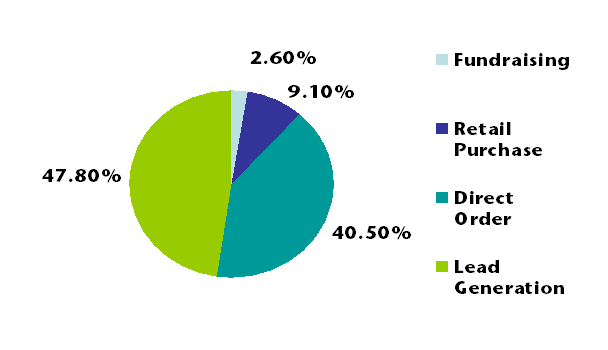Reaching the Consumer
“Reaching the consumer with the message is not the hard part of direct marketing. What is difficult is getting consumers to stop, read the message, remember it, and then act on it.” —Malcolm Gladwell
Successful direct mail evokes emotion
Junk Mail?
More than 50% of households claim they want to receive more or don't mind getting some advertising mail.
84% of respondents open direct mail because they recognize the company who is sending it.
Adults aged 22-34 are most likely to respond to direct mail pieces.
Previous customers of an organization are much more likely to respond to direct mail offers.
The average customer receives 20.01 pieces of mail per week.
Direct Mail pieces from the government sector are most likely to be read, followed by merchants, then social, charitable, or political organizations.
Benefits of Direct Mail
Targeted—it allows you to focus on your specific audience, directing your campaign to the people you want to reach.
Personal—can address customers by name. you can craft messages that are for them, addressing their needs and appealing to their interests
Flexible—can be sent in a variety of formats, including letters, postcards, or brochures. You can be creative with colors and graphics, and even offer free samples of your products.
Tangible—customers can hold your mail, referring to your message as often as needed. Coupons or samples included in your mail help encourage customer interaction
Measurable—the results of your direct mail campaign can be tracked by counting the results or inquiries it generates. You'll know what worked and adjust your plans accordingly.
Cost effective—a direct mail campaign makes your advertising dollars go further, because targeted messages go directly to the people you want to reach.
It's a Campaign, Not An Event
Are We Ready?
The 7 questions
Information?
Goals?
Campaign?
Target?
Internal Players?
What is it going to be?
Budget?
1. What information do we have on our constituents and how can we use it?
What's in our database?
Do we want to target specific groups?
Results from previous direct mailings?
Who are our customers, what do they like?
Are we going to purchase a list?
2. What are our Goals?
Why Do We Open It?
Why consumers open direct mail
Dated material enclosed
Package looks important
Special offer or discount
Package looks interesting
Personalized name on envelope
Timing (Do we need it now?)
Recognize company sending it
Share of Direct Mail Expenditure by Intended Purpose of the Offer

3. What other communications are we sending out and timing?
Coordinate with all of the departments
Non-Profits: Camps, Annual Fund Drives, Capital Campaigns, Special Events
Peak Mailing Months
Non-Profit
| November
| 55%
|
| December
| 36%
|
| September | 36% |
| January
| 32%
|
| October
| 32%
|
| February
| 27%
|
| August
| 23%
|
| March
| 18%
|
| April
| 18%
|
| July
| 14%
|
| May
| 14%
|
| June
| 14%
|
4. Are we going to segment?
Different donor/customer groups?
Lapsed versus major/repeat?
How are we going to segment?
Personalization, different static letter, different offer, different paper, ink color?
Are we going to test?
Personalized

5. Are all the internal players on board?
Does the ED, CFO, VP of Marketing believe this is a good idea? Do they understand the intention and the expected results of the mailing? What is the history of direct mail in the company?
Does the mailing manager know that money needs to be in the postage account?
What information does Database Entry need on the piece to input the information?
6. What is it going to contain and how much copy?
Traditional Direct Mail Piece: Outer envelope, Letter, Brochure, Buck Slip, Reply Card, Reply Envelope
Non-traditional—Self mailer, Invitation to join
7. Have a budget?
Is it realistic?
Is it based on pass performance?
How do you create a budget for a direct mail campaign?
Return on Investment Calculator is on the Marketing and Mailing Calculator page.
Return on Investment calculator sample results
Input General Information
Expected average first-time sales: $300
Average first-time customer retention rate: 60%
Expected customer turnover rate in years (average length of time): 5
Average customer annual sales: $18,000
Input Mailing/Program Information
How many pieces are you mailing?: 1000
What is the total program cost?: $3,750
What response rate do you expect?: 2%
What conversion rate do you expect?: 50%
Results
Number of responders: 20
Number of buyers: 10
Total revenue from program: $3,000.00
Initial mailing ROI: -20%
Lifetime value of new customers: $540,000.00
ROI Individual Costs
Cost per response: $187.50
Cost per buyer/new customer: $375.00
Cost per piece: $3.75
Resources
Direct Marketing Association: www.the-dma.org
United States Postal Service: www.usps.com
Classes: USPS, UCLA, USC
Magazines:
Inside direct mail
Fund Raising Success
Target Marketing
Association of Fundraising Professionals
Direct Mail Archives: www.whosmailingwhat.com
See also:
Direct Mail
Marketing
Print from your Uploaded PDF
Request a Quote or Consultation